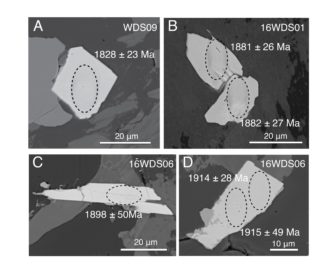LIP barcoding the Yilgarn Craton
The discovery of the 1.9 Ga Boonadgin dyke swarm points to a possible link with India
Mafic dyke swarms are important markers for supercontinent reconstructions and mantle plumes and also act as indicators of local tectonic setting, including paleostress fields and pre-existing crustal weaknesses. We identified a new NW-trending mafic dyke swarm in southwestern Yilgarn Craton, dated at 1888 ± 9 Ma with ID-TIMS U-Pb method on baddeleyite from a single dyke and at 1858 ± 54 Ma, 1881 ± 37 and 1911 ± 42 Ma with in situ SHRIMP U-Pb on baddeleyite from three dykes. The newly named Boonadgin dyke swarm is synchronous with post-orogenic extension and deposition of granular iron formations in the Earaheedy basin in the Capricorn Orogen and its emplacement may be associated with far field stresses. Emplacement of the dykes may also be related to initial stages of rifting and formation of the intracratonic Barren Basin in the Albany-Fraser Orogen, where the regional extensional setting prevailed for the following 300 million years. Recent studies and new paleomagnetic evidence raise the possibility that the dykes could be part of the coeval 1890 Ma Bastar-Cuddapah LIP in India. Globally, the Boonadgin dyke swarm is synchronous with a major orogenic episode and records of intracratonic mafic magmatism on many other Precambrian cratons, having been “missing” in the Yilgarn Craton until now.

Relevant publication:
Stark, J.C., Wang, X.-C., Denyszyn, S.W., Li, Z.-X., Rasmussen, B., Zi, J.-W., Sheppard, S., Liu, Y.. Newly identified 1.89 Ga mafic dyke swarm in the Archean Yilgarn Craton, Western Australia suggests a connection with India. Precambrian Research, Volume 329, pages 156-169 (2019). https://doi.org/10.1016/j.precamres.2017.12.036
